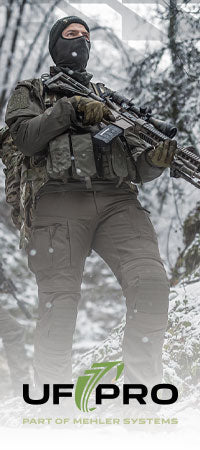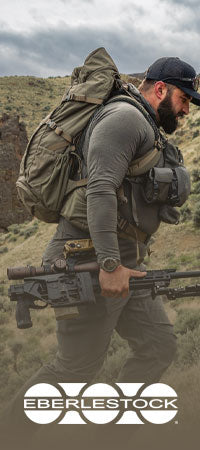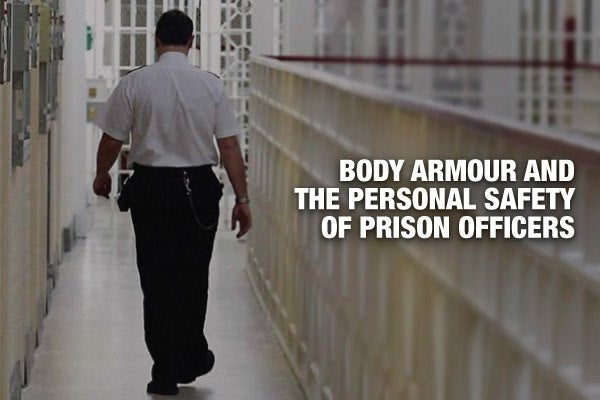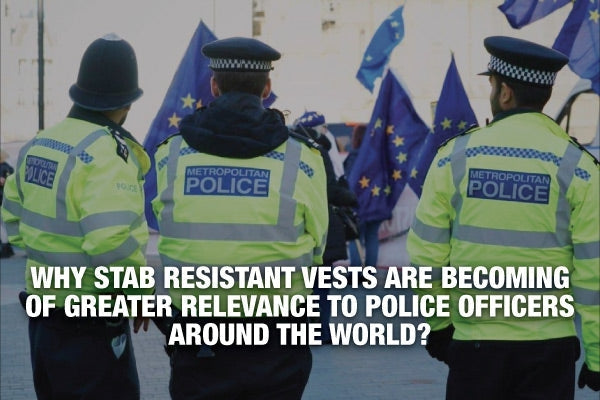Menu
-
- New
-
Brands
-
Categories
- CLOTHING & APPAREL
- BAGS, PACKS & CASES
- Crime Scene Investigation
- Duty Gear and Pouches
- Eyewear
- First Aid and Medical
- Flashlights and Lighting
- Footwear
- Gloves
- Handcuffs and Restraints
- Holsters
- Hydration
- Knives
- Morale Patches
- Multi Tools
- Optics
- Outdoor and Survival
- Pens, Notebooks and Stationery
- Protective Gear
- Tactical Gear
- Training Gear
- Watches
- Deals
- Retail Store
- Government Solutions
- Info
-
- +61 1300 896001
- Login

Brands
- 221B Tactical
- 3M Peltor
- 5.11 Tactical
- 5ive Star Gear
- Adventure Medical Kits
- Accusharp Knife Sharpeners
- Aker Leather
- Arrowhead Forensics
- ASP
- AXIL
- Bianchi
- Blackhawk
- Blade-Tech Holsters
- Breakthrough Clean Technologies
- Camelbak
- CodeRed
- Condor Outdoor
- Damascus Protective Gear
- Earmor
- Eberlestock
- EO Tech
- ESS Eye Safety Systems
- EVI-PAQ
- Evolution Gear Australia
- Fenix Flashlights
- Fifty Fifty Bottles
- Fisher Space Pens
- FoxFury Tactical Lights
- Garrett Metal Detectors
- Ghost Holster
- Grangers
- Hatch Gloves
- Haven Gear
- Hazard 4
- Helikon-Tex
- Heroclip
- Hex Armor
- Holosun Optics
- Hoppe's Guncare
- HWI Gear
- Hydrapak
- Inova Flashlights
- KeyBak Retractable Reels
- Keysmart
- KORE Essentials
- Lansky Sharpeners
- Leatherman
- Ledlenser
- Leupold Optics
- Luminox
- Maglite Flashlights
- Magnum Footwear
- Magpul
- Mantis
- Maxpedition
- Mechanix Wear
- Merrell Tactical
- Mira Safety
- Modestone
- MOHOC
- MRE Star
- MSA
- Nightstick Flashlights
- Nitecore Flashlights
- Nite-Ize
- Notch
- Olight Flashlights
- On Track Meals
- Overboard Dry Bags
- Pelican Products
- Pentagon Tactical
- Plano
- PPSS Stab Resistant Vests
- Princeton Tec
- Propper Clothing and Apparel
- Punch Equipment
- Quiqlite Handsfree Lighting
- Rapid Assault Tools
- Raptor Tactical
- Real Avid
- Reebok Tactical Boots
- ResQme
- Revision Military
- Ringers Gloves
- Rite-In-The-Rain
- SET Breaching
- Silva
- Sirchie
- SHOKZ
- SLNT
- Smith and Wesson
- SOG Knives
- SORDIN Hearing Protection
- Spartan Training Gear
- Spyderco Knives
- Stealth Gear Holsters
- Streamlight Flashlights
- Steiner Optics
- SureFire
- Survive Outdoors Longer
- Tactical Targets
- Tasmanian Tiger
- Tatonka
- Trijicon
- UF PRO
- Ultimate Carry Solutions
- Uncle Mikes
- Under Armour Tactical
- Ventura Tactical Systems
- VERTX
- VIKTOS
- VMI Security
- Voodoo Tactical
- Warrior Medical
- Wiley X
- Zak Tool
- Zan Headgear
- Zero9 Solutions
- 221B Tactical
- 3M Peltor
- 5.11 Tactical
- 5ive Star Gear
- Adventure Medical Kits
- Accusharp Knife Sharpeners
- Aker Leather
- Arrowhead Forensics
- ASP
- AXIL
- Bianchi
- Blackhawk
- Blade-Tech Holsters
- Breakthrough Clean Technologies
- Camelbak
- CodeRed
- Condor Outdoor
- Damascus Protective Gear
- Earmor
- Eberlestock
- EO Tech
- ESS Eye Safety Systems
- EVI-PAQ
- Evolution Gear Australia
- Fenix Flashlights
- Fifty Fifty Bottles
- Fisher Space Pens
- FoxFury Tactical Lights
- Garrett Metal Detectors
- Ghost Holster
- Grangers
- Hatch Gloves
- Haven Gear
- Hazard 4
- Helikon-Tex
- Heroclip
- Hex Armor
- Holosun Optics
- Hoppe's Guncare
- HWI Gear
- Hydrapak
- Inova Flashlights
- KeyBak Retractable Reels
- Keysmart
- KORE Essentials
- Lansky Sharpeners
- Leatherman
- Ledlenser
- Leupold Optics
- Luminox
- Maglite Flashlights
- Magnum Footwear
- Magpul
- Mantis
- Maxpedition
- Mechanix Wear
- Merrell Tactical
- Mira Safety
- Modestone
- MOHOC
- MRE Star
- MSA
- Nightstick Flashlights
- Nitecore Flashlights
- Nite-Ize
- Notch
- Olight Flashlights
- On Track Meals
- Overboard Dry Bags
- Pelican Products
- Pentagon Tactical
- Plano
- PPSS Stab Resistant Vests
- Princeton Tec
- Propper Clothing and Apparel
- Punch Equipment
- Quiqlite Handsfree Lighting
- Rapid Assault Tools
- Raptor Tactical
- Real Avid
- Reebok Tactical Boots
- ResQme
- Revision Military
- Ringers Gloves
- Rite-In-The-Rain
- SET Breaching
- Silva
- Sirchie
- SHOKZ
- SLNT
- Smith and Wesson
- SOG Knives
- SORDIN Hearing Protection
- Spartan Training Gear
- Spyderco Knives
- Stealth Gear Holsters
- Streamlight Flashlights
- Steiner Optics
- SureFire
- Survive Outdoors Longer
- Tactical Targets
- Tasmanian Tiger
- Tatonka
- Trijicon
- UF PRO
- Ultimate Carry Solutions
- Uncle Mikes
- Under Armour Tactical
- Ventura Tactical Systems
- VERTX
- VIKTOS
- VMI Security
- Voodoo Tactical
- Warrior Medical
- Wiley X
- Zak Tool
- Zan Headgear
- Zero9 Solutions
Featured Brands


Body Armour And The Personal Safety Of Prison Officers
October 09, 2019 8 min read

In order for us to effectively help improve the personal safety of prison officers we must first remind ourselves that we cannot change the aggressive behaviour of some prisoners. There is simply no doubt that a prisoner consuming drugs, illegal substances or self-made alcohol can become hostile and violent within a split second, regardless of the prison or correctional officers excellent communication skill, calm personality and willingness to empathise with the prisoner.
At the end of the story an officer in such institution can be, and often is, the bearer of bad news. He might be required to inform the prisoner of any disciplinary, restriction of privileges, bad family news, cancellation of visits, or of the news that his/her cell will be searched, all of which can of course create all sorts of physical reactions.
We also need to remind ourselves that prisoners have got plenty of time on hand to develop tools and vicious weapon to carry out acts of aggression. The ideas to create make shift weapons, e.g. sharpened table and bed frame legs, shanks made out of plastic, shanks made our of porcelain, sharpened wood or pieces of mirror, and the idea of melting razor blades into tooth brushes and turning pens, pencils and nails into ‘spike weapon’ have not been developed out of five minutes of simple boredom. These ideas have been developed following hours and sometimes days, weeks and months of malicious thought processes, and even the very best prison or correctional officer can one day be on the receiving end of such malicious thought process.
Unfortunately it is a matter of fact that the personal safety and well-being of police officers is much more in the public eye, than the important service our prison officers provide and the dangers these professionals face every single day. Somehow this is a little understandable (but wrong), as the public is certainly more keen to see police officers patrolling their neighbourhood and giving them a certain sense of security. Prison officers on the other hand are much more ‘out of sight’ end hence they do get forgotten a lot. I don’t know, but can you see the general public discussing the safety of prison officers, can you? But, don’t prison officers deserve at least the same support, attention and respect like other frontline public services?
If one would ask 1,000 members of the public, who would they rather offer a salary increase, their local police officer or prison officer? I am most certain that in excess of 90% would select the police officer. Why? Because most people are selfish. Those 90% wouldn’t believe the police officer deserve that increase, it is more that they would expect a better service and performance which would positively affect their lives. They would expect a safer home, faster response time when in distress, less anti-social behaviour and their properties and belongings being better guarded. Because they cannot see a direct ‘return on such investment’ prison officers needs and well-being is and will be overlooked too many times.
So let me come to the key message of my article, the issuing of PPE (Personal Protective Equipment).
Stab resistant vests for prison officers in general is not about eliminating the risk of workplace violence related injuries, but about effectively reducing the risk within an environment where a risk has been identified.
I see the question about body armour for prison officers is being very similar to us wearing a seat belt in our car. We don’t use a seat belt today because we know for sure we have an accident today. Neither do we use a seat belt because we are scared, paranoid, or worried that we might have a crash today. No, not at all, the reason why we wear a seat belt is that we do understand that we have a much higher chance of survival in case someone is drunk, plays on his mobile phone or is otherwise distracted and crashes into our car, despite our own exceptional and advanced driving skills we might be able to claim.
Another question worthwhile answering when exploring the potential need/use of concealable body armour within correction facilities and prisons is how much do we actually really care about those guys ‘behind the wall’? Using my above analogy, if my child would be sitting on the back seat of my car I will make sure it is wearing a seat belt. If the woman I love very much is sitting right next to me in my car I will also make sure she is wearing a seat belt. But then having said that, some decision makers ‘do not allow’ their colleagues to wear a ‘seat belt’ or in this case any type of PPE, ignoring their concerns, fears and anxieties. For me this is absolutely outrageous!
So, how much do we care about the personal safety of prison and correctional officers? Are we actually willing to make a real difference to their risks and threats? Only YOU can answer this question yourself. More and more officers are raising their voices, yet their voices are not being heard.
I have also asked myself the following many times, is it not really questionable that police officers who deal with dangerous criminal individuals for only a very few minutes every day, usually during the arrest or approach of a dangerous member of the public (and often with a solid backup team) are by law required to wear body armour in most countries, but most corrections or prison officers charged with supervising the very same dangerous and brutal individuals, potentially for a number of years, are not being issued with any type of protective clothing at all? Do we really believe ‘that guy’ becomes a better human being when imprisonment?
- A fairly recent report suggest the total number of assaults in UK prisons where weapons are used are extremely high, and more detailed analysis on the types of weapons used shows that since the year 2000 there has been an 85% increase in the number of assaults where a knife or blade of some type as used.
- Looking briefly at our friends in the U.S. and based on information released by the US National Library of Medicine National Institutes of Health in December 2013 there are approximately half a million correctional officers in the U.S. responsible for supervising more than two million inmates, and in 2011 correctional officers experienced 254 work-related injuries per 10,000 due to assaults and violent acts. This is considerably higher than the rate of injuries from assault and violent acts for all workers in the U.S. (seven per 10,000).
- According to the 2013 Correctional Officer Wellness and Safety Literature Review, correctional officers are involved in the highest amount of non-fatal violent encounters than any other occupation.
- A study by the National Institute of Justice in 2007, discovered there are approximately 2,000 correctional staff member injuries annually due to violence against officers by inmates.
- The BBC in the UK reported on 16th April 2014 that the number of serious attacks on prison officers by inmates increased by 45% in two years, figures released by Labour have revealed. In 2012, a total of 543 assaults on prison officers were referred to the police – up from 374 in 2010.
- A 2015 study in the U.S. concluded that for every 10,000 full-time Corrections Officers, there were 254 workplace assaults and violent injuries reported in 2011 that’s 36 times the rate for all American workers. In 2013, 15 workplace fatalities of correctional workers were reported nationwide, in a workforce of nearly 470,000 people.
- Australian news network ABC reported in 2015 that Victoria has the most violent prisons in Australia, with a prison officer assaulted every three days. The Department of Justice data also showed inmate fights were a daily occurrence!
- The digital/online platform of ‘Heute’ stated that 109 prison officer were attacked by inmates in the small and beautiful country Austria is.
What type of body armour for prison officers could make a real difference to their safety?
For a number of professional reasons I have been part of many security related discussions with prison and correctional institutions in several countries around the world and please be assured I do 100% understand all operational risks and threats, as well as all concerns raised in reference to body armour.
In many of these meetings the ‘non-confrontational ‘, ‘non-aggressive’ or ‘non-threating’ design issue has always been the centre point of these sometimes very passionate discussion. Many governments want to ensure their officers don’t look like ‘Robocop’ and hence many manufacturers have worked hard on more ‘approachable’ designs.
However, the ultimate body armour doesn’t exist yet. The idea of a body armour which is cosy and comfortable, weighs only a few grams and is a couple of millimetres thin, but offers unlimited protection from blunt force trauma, edged weapon and hypodermic needles and slash attacks simply doesn’t exist and may well not be available for many years to come.
So we need to decide what is the most realistic risk within our facility, department or specific operations, or indeed can we use a combination of different types of body armour to create the ultimate protection we desire?
Stab Resistant Vests
Based on my in depth understanding of this subject we all need to understand that an assault resulting in blunt force trauma injuries is the most likely type of assault a prison officer will suffer. The second and third most likely assault will involve edged weapons or hypodermic needles.
Blunt trauma, blunt injury, non-penetrating trauma or blunt force trauma all refers to a type of physical trauma caused to a body part, either by impact, injury or physical attack via a kick, punch or blow using a blunt object. How often will prison officers throw objects at a prison officer as an act of violence during ‘normal disturbances’, never mind serious riots? Assaults which lead to blunt force trauma injuries are exactly the type of assaults our prison officer face around the world, and I strongly believe the prevention of such injuries deserves our full attention.
Here is the first ‘problem’. The correct type of stab resistant vests offering substantial levels of protection from blunt force trauma will not be soft, flexible and ‘cosy’. Such body armour would be made out of a body moulded rigid material, such as a high performance polycarbonate, the same material that is used for motorbike helmets and baby bottles. Such material would also offer exceptional levels of protection from all types of edged weapons and very importantly also from hypodermic needles.
The comfort level of any body armour for prison officers is absolutely acceptable, but above all this type of body armour offer the precise protection from all three key threats corrections and prison officers are facing in today’s society.
The second main advantage of polycarbonate based body armour is that it is very light, thin and reasonably concealable. However, another massive unique advantage is they also offer an unlimited lifespan, as no physical, chemical or biological evidence even suggests that they will degrade. Their performance and protection levels will always remain the same. This is of great financial importance as all other e.g. Kevlar® based body armour should/need replacing after five years due to a reduction of performance. I certainly would throw mine away after such period of time.
Slash Resistant Clothing
Designed to protect frontline professionals working within hostile environments, SlashPRO® Slash Resistant Clothing (www.slash-pro.com)
effectively shield the major arteries from laceration, effectively helping to reduce the risk of rapid blood loss, subsequent shock and even death.
Unless having undergone extensive edged weapon training, many or most prison and correctional officers will, by instinct, lift their arms and hands during a hostile situation, in order to protect the face and head. This is nothing to be ashamed of. In fact, it is normal, and only highly trained operators would respond differently and more effectively.
However, we must acknowledge that this ‘normal’ and ‘natural’ action would expose an extremely vulnerable area under your arms. A cut, injuring the auxiliary artery under your arms, can lead to rapid blood loss and even death. This is where knife resistant clothing stats making real sense.
CERT or Tactical Response Groups within prison services are equally at risks when dealing with major disturbances and require equal levels of protection.
In fact, a retrospective survey of hospital admissions data that contributed to the development of the standard suggested that 63 % of wounds attributable to sharp edged weapons were slash events. The most vulnerable areas were the head, arms, thighs and neck (Bleetman, Watson, Horsfall and Champion, 2003).
SlashPRO® Slash Resistant Clothing is now being worn by homeland security agencies (law enforcement, correctional services, border forces, immigration, customs etc.) around the world.
Also in PPSS Group Blog

Why Stab Resistant Vests Are Becoming Of Greater Relevance To Police Forces Around The World?
October 29, 2019 4 min read
Read More